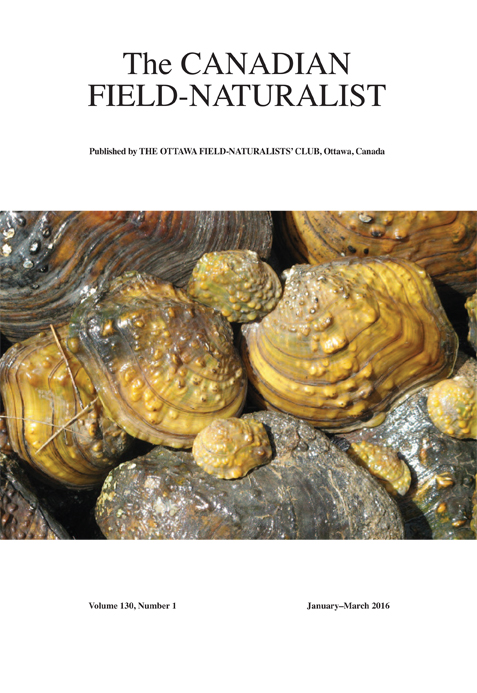Arctic Plants Produce Vastly Different Numbers of Flowers in Three Contrasting Years at Lake Hazen, Quttinirpaaq National Park, Ellesmere Island, Nunavut, Canada
DOI:
https://doi.org/10.22621/cfn.v130i1.1806Keywords:
Arnica angustifolia, Narrow-leaved Arnica, Cassiope tetragona, Arctic White Heather, Pedicularis capitata, Capitate Lousewort, climate change, flowering, flower abundance, reproductive successAbstract
To maximise reproductive success in the short Arctic growing season, plants pre-form flower buds the year prior to flowering. Flower bud production depends on warm ambient temperatures. Thus, although currently Arctic plants have low rates of sexual reproductive success, the warming climate may increase reproductive success. Following the long, warm growing season in 2012, plants at Lake Hazen, Ellesmere Island, produced many flowers in the short, cold growing season of 2013. Conversely, few flowers were produced in 2014, a long, warm growing season, but many flowers were produced in 2015, another long, warm growing season. Potentially higher rates of reproductive success in a warming climate could be compromised if consecutive years do not have long, warm growing seasons.Downloads
Published
Issue
Section
License
Copyright for Canadian Field-Naturalist content is held by the Ottawa Field-Naturalists' Club, except for content published by employees of federal government departments, in which case the copyright is held by the Crown. In-copyright content available at the Biodiversity Heritage Library is available for re-use under a Creative Commons Attribution-NonCommercial-ShareAlike 4.0 (CC BY-NC-SA 4.0) licence. For usage of content at the BHL for purposes other than those allowed under this licence, contact us.
To request use of copyright material, please contact our editor, Dr. Dwayne Lepitzki: editor -at- canadianfieldnaturalist -dot- ca





